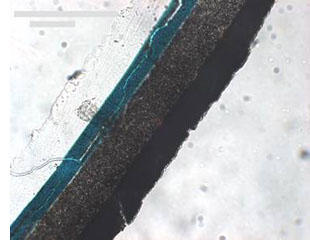
Paints and Coatings

Paint evidence occurs as transfers in a variety of crimes, including homicides, vehicular hit- and-runs, sexual assaults, and burglaries. Paint examinations involve either the development of information to aid an investigator or a comparison between a questioned paint sample from a crime scene and a suspected known source of paint. If asked to perform a comparison, the forensic paint examiner will use a variety of microscopical and sophisticated instrumental techniques to reach a conclusion as to whether or not the questioned sample could have come from the suspected object. Furthermore, they will be asked what the significance of the match is. Is the paint unusual in any way? How limited is the group of potential donor sources?
The most challenging task of the paint examiner is the determination of the color, year, make and model of a suspect vehicle that has deposited microscopic bits of paint on the clothing of a hit-and-run victim or on an object at a crime scene. First, the microscopic particles of paint must be located and recovered from the clothing of a victim, and then the paint must be analyzed and compared to reference collections and data bases which catalog what colors and formulations of paint are used by which automobile manufacturers. Just like most other man-made materials, the industry is constantly changing and the efforts needed to keep up with this knowledge are monumental. The GBI, along with about 100 other crime laboratories across the United States, Canada, Europe, Japan and Australia, contributes to and utilizes a database developed and maintained by the Royal Canadian Mounted Police (RCMP). This database, called Paint Data Query (PDQ) contains chemical and physical information about thousands of paint systems used on vehicles dating back to the early 1970's. This database is the primary tool available to forensic laboratories for use in providing vehicle year, make or model information to the law enforcement community.